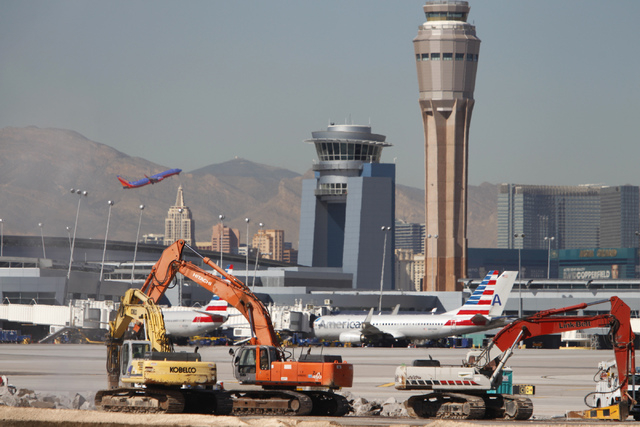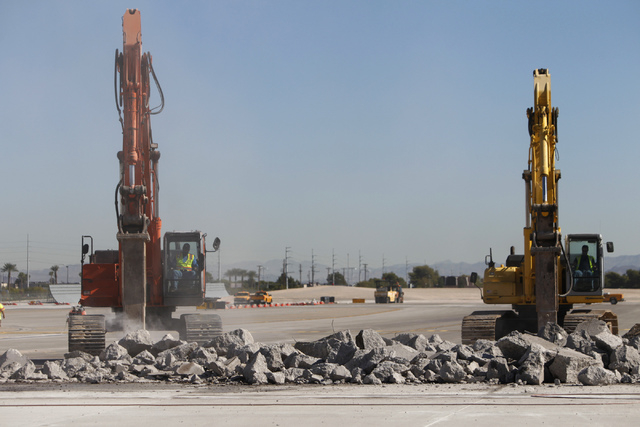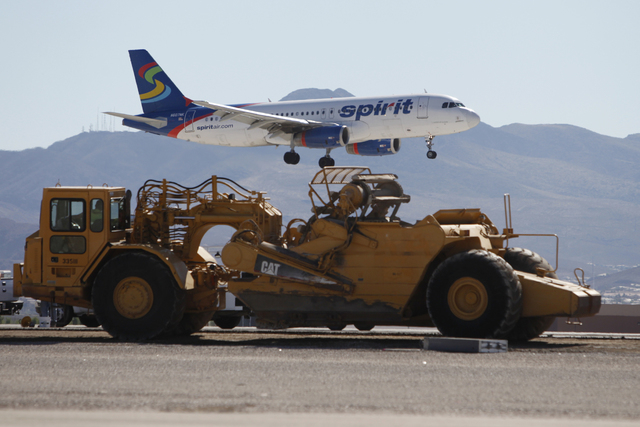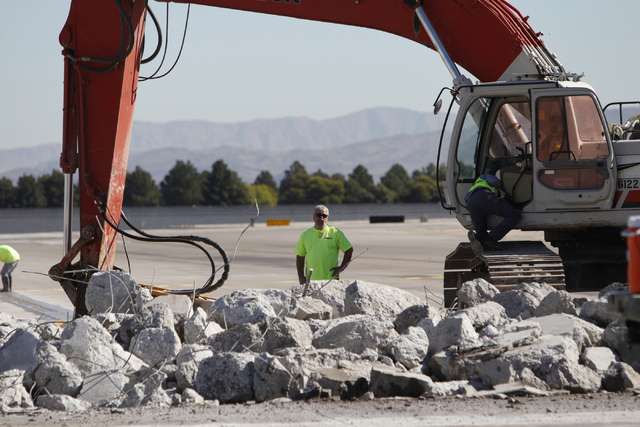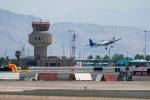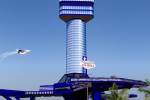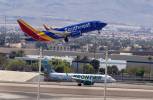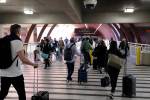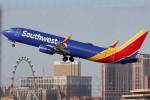Key runway shutdown at McCarran to alter flight patterns
Fall is in the air, but so is additional aircraft noise.
When McCarran International Airport shuts down its 14,505-foot east-west Runway 25R/7L on Wednesday for the second half of a $65 million rehabilitation project, it's expected to alter flight patterns in Las Vegas' airspace.
The runway, the third-longest commercial airport strip in the United States, handling about one-third of McCarran's annual traffic, will be shut down through late April or early May.
Contractors are replacing an asphalt surface with more durable and safer concrete on the west end of the runway. A year ago, McCarran shut down the same runway and rehabilitated the east end of the strip, completing work in six months. After the first phase was completed, the runway reopened for the busy summer tourism months.
McCarran will continue to use a parallel runway, designated as Runway 25L/7R, and the airport's two north-south runways. But regardless of the availability of the three other runways, certain weather conditions could limit their use and result in flight delays.
When the runway under construction was closed, it generated complaints from residents not expecting the aircraft noise resulting from the modified flight patterns. To Clark County Aviation Director Rosemary Vassiliadis, it's a little pain that accompanies the ultimate gain.
"We anticipate an increase in aircraft noise in some parts of the valley during this work period," Vassiliadis said in a statement on the runway closure. "We appreciate the community's patience and understanding as we work to improve our airport and maintain our ability to welcome millions of passengers to Las Vegas every year."
The project was initially budgeted for $67 million, but the successful bid came in at $65 million.
About 75 percent of the project is being paid for by the federal government as a Federal Aviation Administration airport project and the first phase is fully funded. McCarran already has received $32 million in federal discretionary funds, including $26 million in September 2014 for the work that occurred in the first phase.
The remaining funding is being generated locally and Vassiliadis said it would come from the airport's five-year capital improvement budget from sources that are not operationally generated. The county's share won't come from airline fees or food and beverage taxes, but on revenue from airport terminal slot machines and office leases.
The rehabilitation is a massive project, too large to complete in one six-month period.
The project was split over two phases because concrete pours are better in the cooler months. It's also favorable to McCarran's schedule because some international air carriers reduce their flights in the winter months due to seasonal traffic demands.
International carriers are most likely to use Runway 25R/7L because their wide-body jumbo jets are heavier and need a longer runway to slow down when they land.
Large and heavy jets also need a longer runway more in the summer months because when it's hot, jets need greater speed to create the lift necessary to get a plane off the ground.
Over the life of the project, 250 jobs are being provided, including surveyors, contractors, fabricators, engineers and other service providers.
The general contractor is Las Vegas Paving, the low bidder on the project, which also won the bids on the three previous runway rehabilitation projects.
The first phase of the project covered close to two-thirds of the length of the runway, from the east end to a point just west of the airport access tunnel. The paving project also will include a portion of taxiways just north of the runway.
The logistics of doing the east end first were important because it covers the portion of the runway where most westbound flights touch down.
One of the reasons concrete is favored over asphalt is that rubber from an aircraft tire is shed from the tire when it lands and tends to blend into the asphalt in the heat.
McCarran has a machine that can lift the rubber out of the asphalt and smooth the surface — employees jokingly refer to it as a "runway Zamboni" — that makes for a safer landing surface.
It takes about four hours to smooth the entire surface of the long runway and maintenance usually occurs in the early-morning hours when there's less traffic.
Contact reporter Richard N. Velotta at rvelotta@reviewjournal.com or 702-477-3893. Follow @RickVelotta on Twitter.



